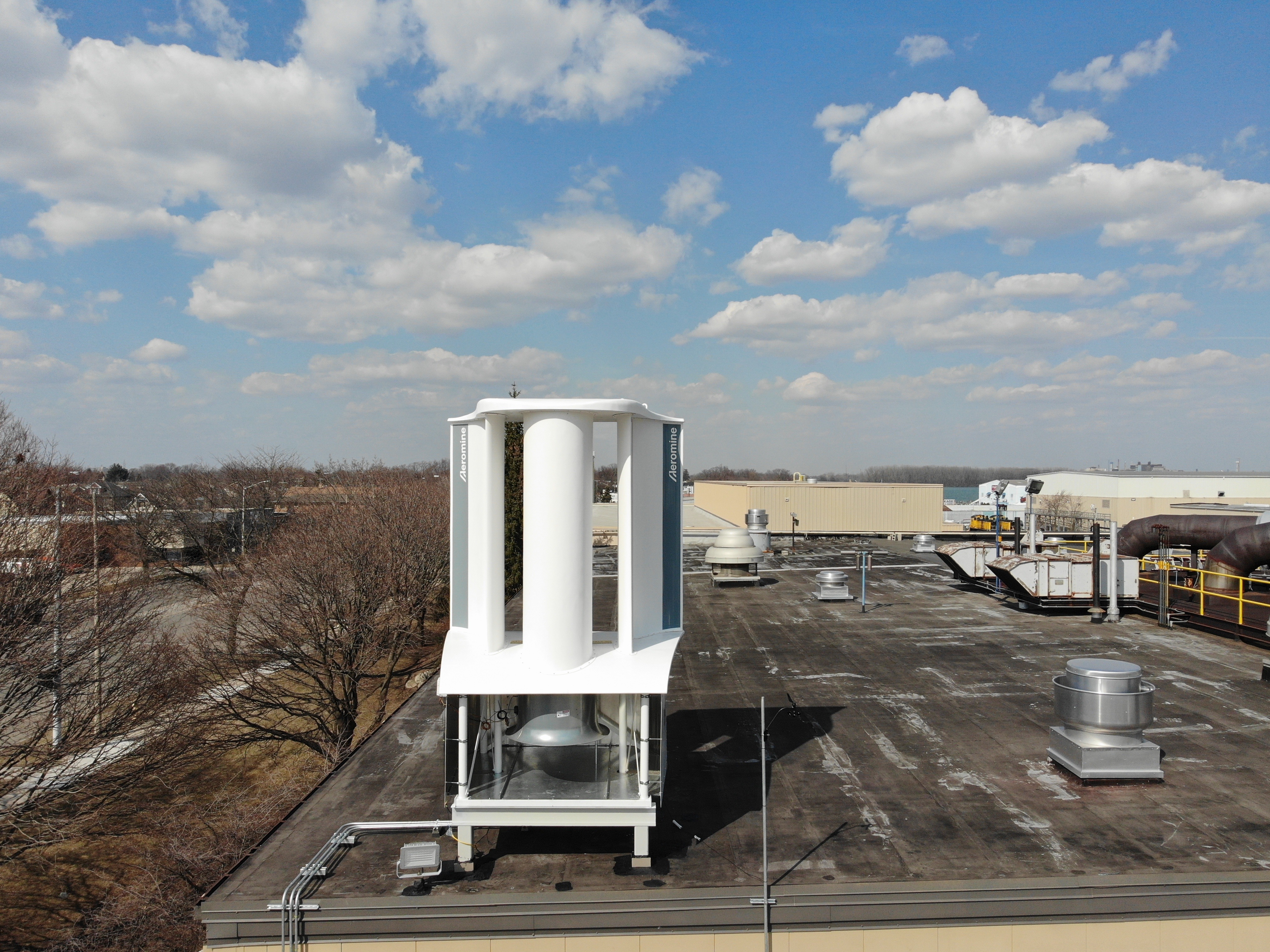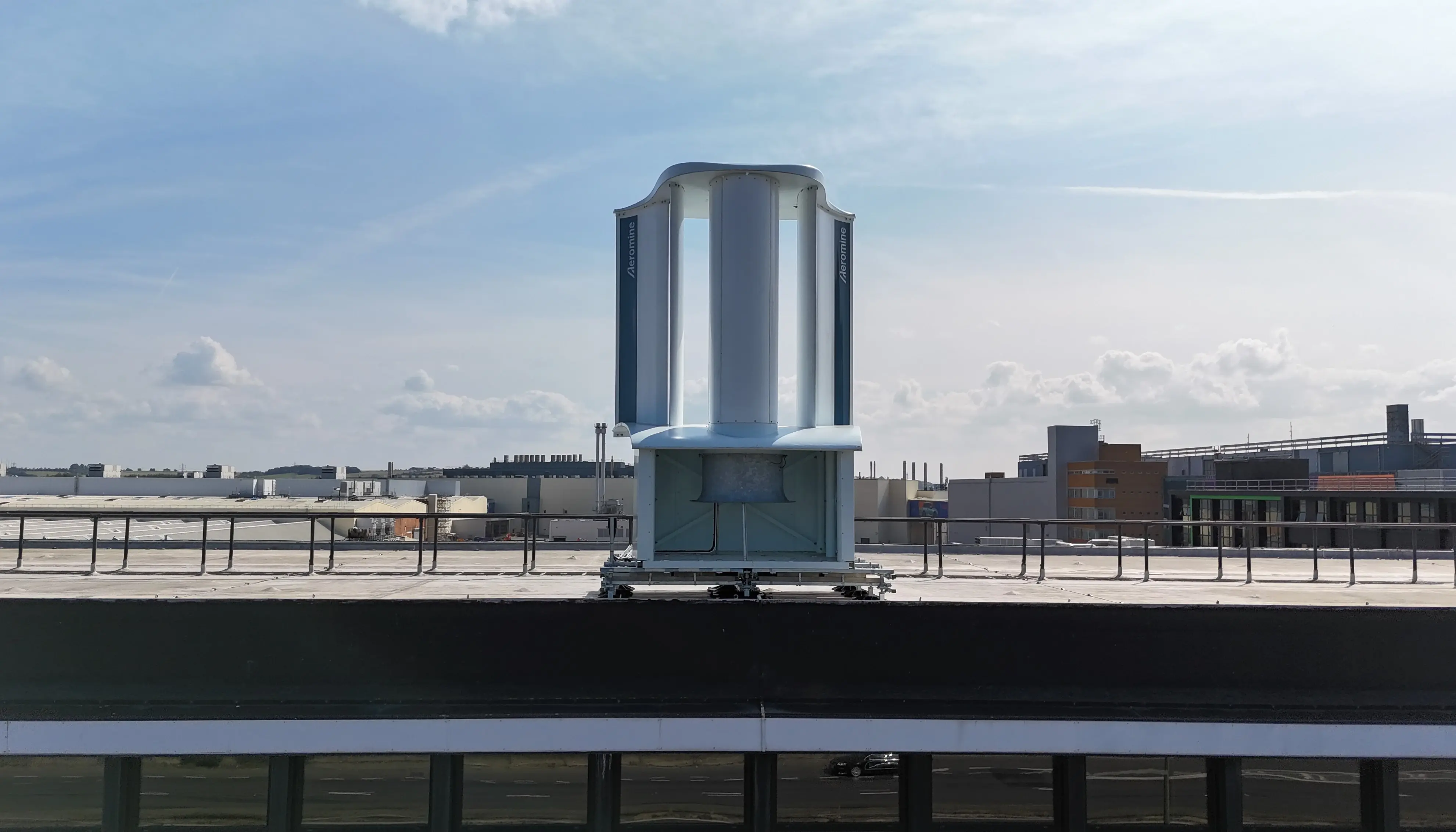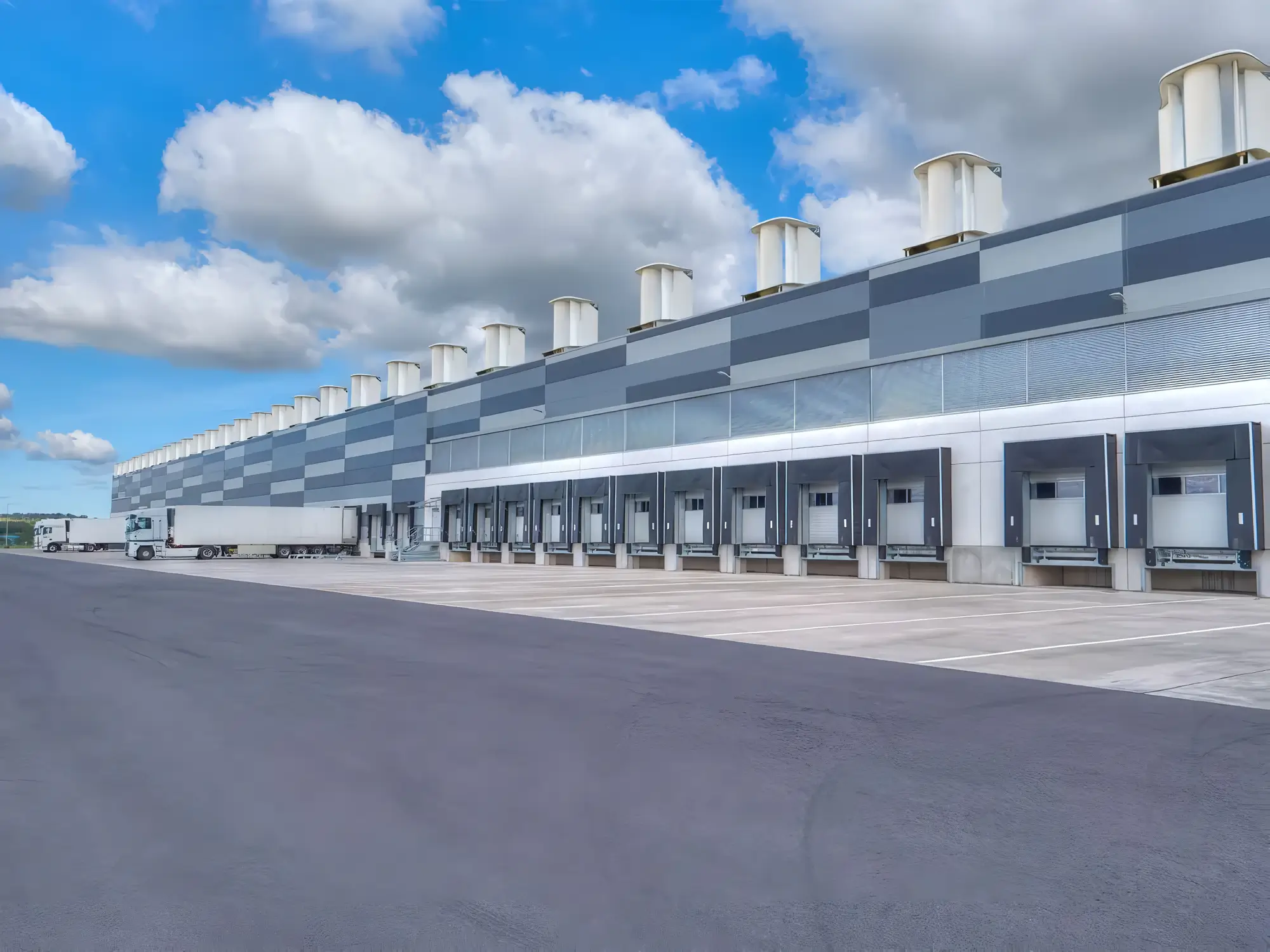February 8, 2023
By Luana Steffen
Aeromine Technologies, a University of Houston spinoff, has created a rooftop wind device dubbed the AeroMINE. The Houston-based company claims that their unique “motionless” rooftop wind generators operate more or less silently and occupy only 10% of the roof space, producing up to 50% more energy than an array of solar of the same cost. Moreover, they appear legitimate in independent tests.
Novel Rooftop Wind Energy
Distributed energy generation is anticipated to play a growing role in the world’s energy markets. Currently, rooftop solar arrays account for most of this, although wind power has a chance to become more prevalent in some regions as a renewable energy source. However, not every location is suitable for a bladed wind turbine; therefore, Aeromine Technologies has developed a unique and tidy type of rooftop wind energy capture unit that can potentially be a game-changer.
As with conventional wind turbines, size is crucial. Therefore, Aeromine’s wind energy boxes are still quite large despite having a relatively tiny footprint on your roof. The wings are around 10 feet (3 meters) high, and based on the most recent footage, they are currently perched on top of boxes that may add another 6 ft (1.8 meters) or more to their height. However, since an AeroMINE unit doesn’t produce the same noise or distracting movement as a standard turbine with blades, they might be less intrusive in inhabited regions.
They operate uniquely, resembling a pair of race car spoiler wings sandwiched together facing one another with a circular pole in the middle. These stationary wings are angled into the wind to create a low-pressure vacuum in the device’s core. Air is drawn into the device through perforations in the wings or the round pole, which also helps speed up ambient airflow over the wings.
Where is the Turbine?
Depending on the setup, the turbine can be at the bottom of the central pole, surrounded by a duct, or on the roof of the buildings themselves, in a pipe that connects either to the central pole or to hollow chambers in the wings. In either case, the wings produce a low-pressure vacuum area filled with air through a tube. Aeromine then inserts a relatively small, inexpensive internal propeller (possibly 36 inches/91 cm in diameter) into that tube to power a generator.
It is very safe, quiet and inexpensive to build. The fan is not unique, and the entire system can be disassembled for easy transportation and relatively simple assembly on-site.
Aeromine has yet to decide on a standard device capacity in its latest version. However, these units were each rated for 5 kW in a solution submitted to the AFWERX Reimagining Energy challenge in January 2021, which is relatively similar to the output of a standard 21-panel home rooftop solar system. Each unit in this (now-outdated) AFWERX challenge claimed to create about 14.3 MWh yearly. Of course, many units can be run along the leading edge of a structure, spaced apart by about 15 ft (4.6 m). A 6.5-kW residential rooftop solar system generates about 9 MWh annually.
The potential is obvious; solar and wind energy complement one another wonderfully. Solar only generates during the brightest hours of the day, whereas wind can generate 24 hours daily, depending on the conditions. Additionally, an AeroMINE system’s small rooftop footprint makes it possible to cover the remaining roof with solar panels, set up some on-site energy storage, and run a decent-sized business mainly off the grid. Aeromine’s CEO, David Asarnow, seems confident about the potential for these compact design modules to provide on-site renewable energy,
“This is a game changer adding new value to the fast growing rooftop power generation market, helping corporations meet their resilience and sustainability goals with an untapped distributed renewable energy source.”
“Aeromine’s proprietary technology brings the performance of wind energy to the onsite generation market, mitigating legacy constraints posed by spinning wind turbines and less efficient solar panels.”
What are the Downfalls?
These devices must be positioned in locations where the wind direction is relatively constant because they do not orient themselves to catch a breeze – and they likely never will, as they are designed to be cost-effective equipment. Furthermore, they will create shadows, preventing the sun from hitting rooftop PV panels unless the structure is angled so that the sun rises from one side and the wind comes from the opposite. Additionally, their height may make them a visual or municipal planning issue in some places. Therefore, there will undoubtedly be a limited number of sites where they will perform optimally in a hybrid system.
However, those appear to be the only downfalls at first glance. They are less expensive, durable, safer, and less intrusive than windmill-style designs. Additionally, they provide a more accessible method for integrating wind energy resources into a distributed power system.
Testing the System
Aeromine, backed by the University of Houston, has also submitted its equipment for testing to the gold-standard Sandia National Laboratories; Sandia has been closely involved in the development. It claims to capture one-third to one-half of the Betz limit of potential wind energy.
According to a technical performance analysis conducted in collaboration with Sandia using wind tunnels at Texas Tech University, “by sweeping a large area of wind with a reliable design, AeroMINEs overcome the challenges that have plagued other distributed wind solutions and have hindered distributed wind from playing a significant role in energy markets.” However, the report also indicates that energy extraction increases along with some aerodynamic instability when the airflow approaches the device from higher angles of attack.
Aeromine reports that BASF is evaluating the system at its production site in Wyandotte, Michigan, though it does not specify how many units have been installed or their capacity. Looking via Google Maps’ satellite overlays, the pilot test unit from the above video is located right here, based on the distinctive marks on the roof. However, the satellite image needs to be updated to include the wind power system, so we cannot learn much more.
This extra-tall unit on a box is likely only a temporary prototype designed to be super-easy to install and remove. In contrast, the final product will sit snugly against the roof and have its pipes and turbine installed beneath the surface.
It would be nice if Aeromine’s marketing were more transparent, but it’s not. In any case, despite the little details the company is willing to disclose at this time, this is a significant step forward for distributed rooftop wind generation. Hopefully, Aeromine proves that it can take this technology to the next level and make a meaningful impact in the race to achieve net-zero carbon emissions.
Watch the short video below for more information.
https://www.prnewswire.com/news-releases/breakthrough-wind-solution-gives-commercial-property-owners-efficient-new-rooftop-option-to-generate-renewable-energy-301646250.html
https://www.intelligentliving.co/wind-turbine-wall-and-other-creative-ideas-to-harness-clean-energy-around-us/
https://www.intelligentliving.co/danish-government-invest-artificial-wind-energy-island/
https://www.intelligentliving.co/eco-friendly-transportation-fold-up/
https://reimaginingenergy.afwerx.com/exhibitor/aeromine-technologies-11604/
https://www.intelligentliving.co/how-solar-panels-power-our-world/
https://www.sandia.gov/labnews/2021/12/10/sandia-wins-seven-rd-100-awards-and-two-specialty-honors/
https://www.osti.gov/biblio/1640929
https://www.youtube.com/watch?v=RoVIsGfTkS0
https://www.youtube.com/watch?v=BVz3KFlbnh
Source: https://www.intelligentliving.co/motionless-rooftop-wind-device-could-be-a-game-changer/


